The History of Home, Part 2
Veterans Memorial Stadium (1950-Present)
Troy has not played anywhere as long as they have made Veterans Memorial Stadium their home. Opened in 1950, The Vet, as it is commonly known, finally gave the Red Wave a football-only facility to compete in, after years of sharing Pace Field with the baseball team.
From its construction until the late 1990s, there was no real change in The Vet, aside from minor modifications and slight expansions. Since the early days, the stadium was always going to be named Memorial Stadium. A man named Ray Pinckard offered to place a plaque in the stadium in honor of Pike County residents who died in the World Wars. The stadium gained its more familiar “Veterans Memorial Stadium” name in 2010.
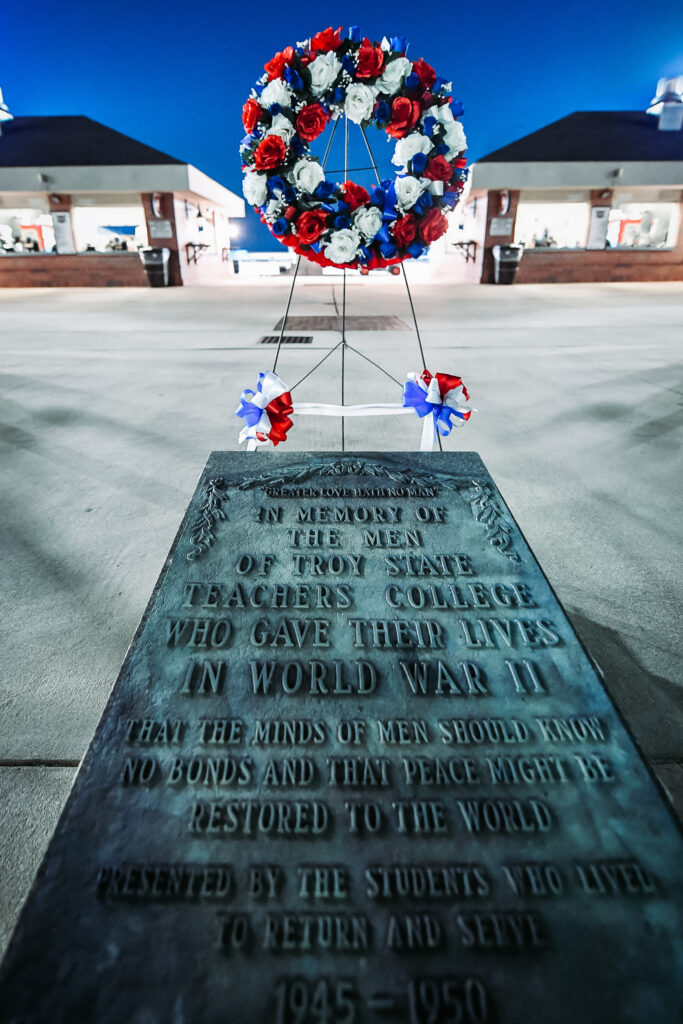
These changes to the name, however minor, have been integral in the lore surrounding The Vet since its creation. Let’s explore the history of Veterans Memorial Stadium in this her 70th year.
Memorial Stadium (1950-1998)
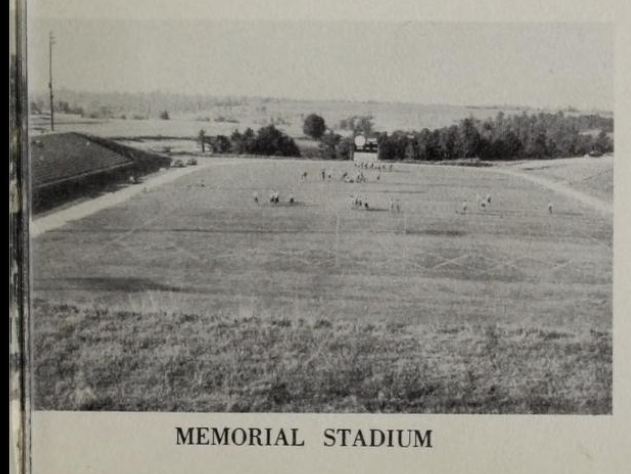
During the early years of Memorial Stadium, Troy underwent a metamorphosis of sorts. The university itself began to grow and change as it blossomed from a small, rural teachers college into the International University it is today. The football team during this time was no different, and it started with a brand new field. From the creation of the stadium until the late 80s, most of the information I found was piecemeal and in some instances, contradictory. I have done my best to present it as accurately as possible.
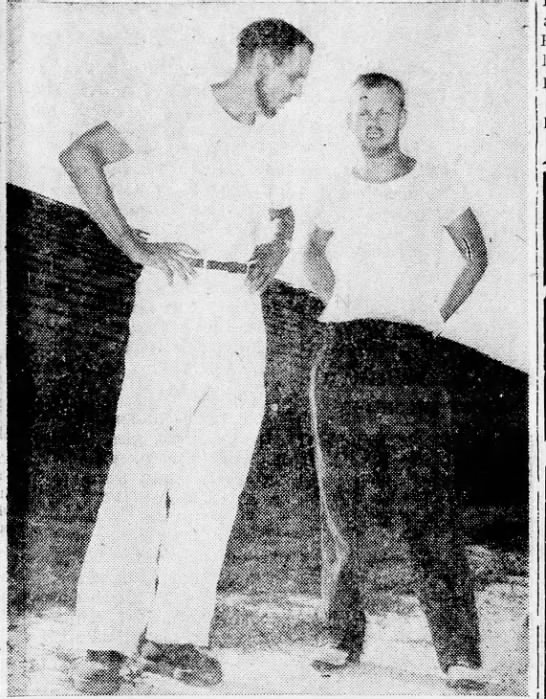
Financed for $65,000 ($702,000 adjusted for inflation), the new home of the Red Wave began construction in January of 1950 (clearing of the land started in December of 1949) and would be ready for the home opener against Southeastern Louisiana on September 16. While its first game was not the greatest (an inauspicious 18-7 loss), there were plenty more opportunities for success at home.
The stadium itself was built in a natural bowl cleared out by Joe Frank Walters’ construction company, at no cost to the university. In total, some 50,000 yards of dirt was excavated to make room for the future stadium. The Sam Murphree Company poured concrete for the bank of seats from January to March 15, giving some idea about what the stadium would look like when completed. These concrete seats would give space for nearly 3,100 spectators to watch the Red Wave play. Steel bleachers from Pace Field were reconditioned to give space for an extra 1,100 fans.
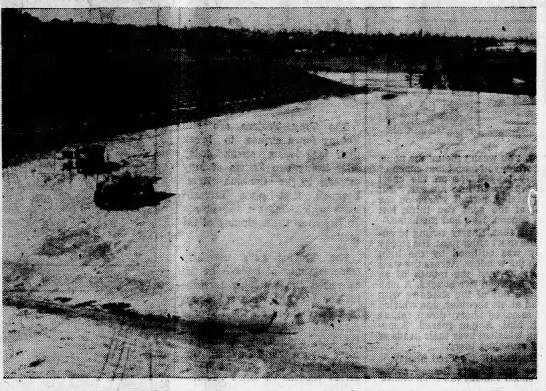
The people of Troy banded together and donated money in various ways, most notably from the Troy Jubilee which was held on campus on July 20. All proceeds from the event went to the construction of the stadium. Another fundraising attempt was a predecessor to No-Shave November. Students formed the Whisker Club, who fined unbearded men to add additional funds to the stadium’s completion.
For most of the year, the stadium was only referred to as “the new stadium.” The Veterans of Foreign Wars and the American Legion urged the State Board of Education to honor the sacrifices of men lost in the two recent World Wars. It became Memorial Stadium on August 15, 1950.
The stadium featured a 12 feet by 18 feet scoreboard in the north endzone. Tiny compared to our current standards, it could be read from over 1,000 feet away. The proceeds from the Troy Jubilee—about $5300—were used to build a fence around the stadium. It would be 2,020 feet long and 7 feet high with 14 foot service gates, two 4-foot exit gates, and two main entrances.
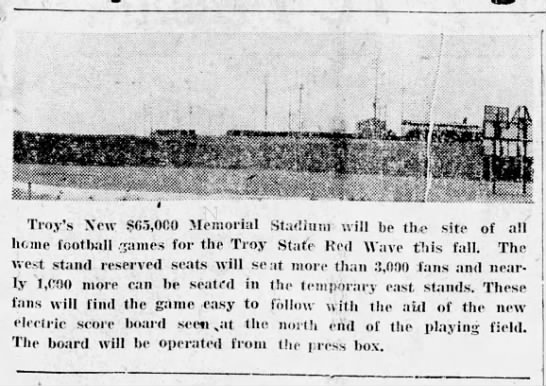
The main attraction of the home side, however, would be the new two-story press box which would measure 50 feet long. The bottom of the building would be used for concessions, and the top was divided into areas for media and the public address system.
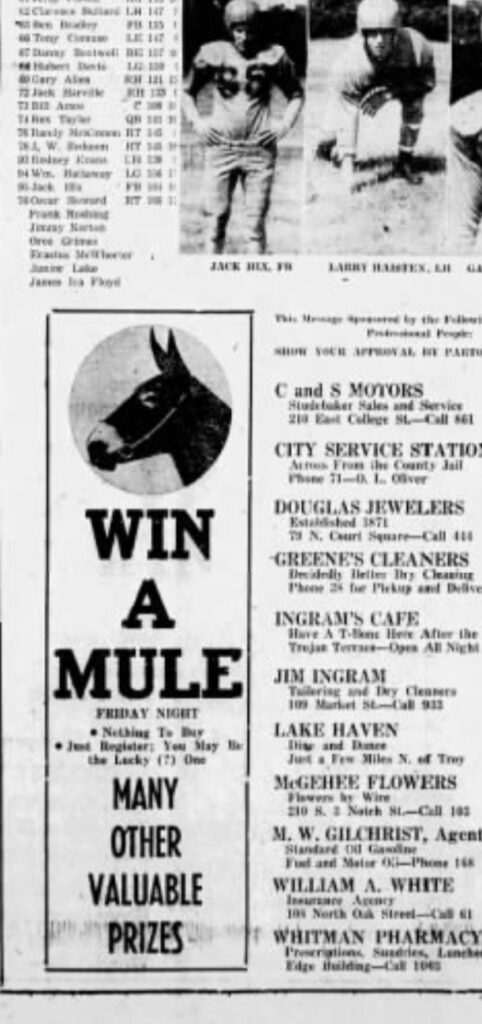

In the late 1950s, a wooden set of bleachers was added to the south endzone, adding roughly 200 seats. (These were later removed.) The first major update to the structure was the addition of a six-lane track in 1960. This track would become the Jesse H. Colley Track, first referenced in 1977. I assume Colley helped fund the track, though I could find no announcement from Troy. That name now adorns the nearby track/soccer complex next to Trojan Arena.
Between 1965 and 1968, Troy expanded the stadium to seat roughly 8,000 spectators. This doubled the capacity of Memorial Stadium at its opening eighteen years earlier. The next year head coach and Athletic Director Billy Atkins announced a $340,000 project to expand Memorial Stadium by 10,000 more seats, as well as the construction of a field house for the team and athletic department offices. This would have made Memorial Stadium an 18,000 seat venue. From what I can tell, aside from the completion of the fieldhouse itself, the only movement on this plan was the addition of 1,922 seats in 1969. Three years later, the Tine Davis Fieldhouse was completed. I also found a reference to two practice fields in 1975. I am not sure if they were already there or if they were added with the 1969 project.
A $43,500 investment was made in renovating the 16 year old track in 1976. The improvements included an all-weather six-lane track, pole vault runways, a high jump apron, and a steeplechase approach. These allowed Troy to begin hosting track and field events, both for the university and the high school.
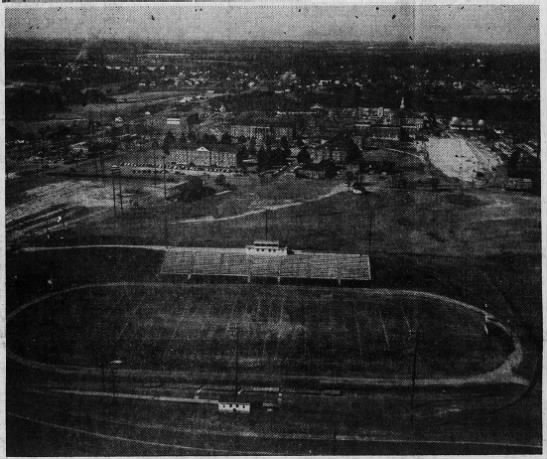
Early success in the 1980s would see Memorial Stadium begin to morph into the more modern structure. After winning the 1984 Division II national title, the time was right for the Trojans to add extensive upgrades. According to articles at the time, the capacity at Memorial Stadium was 8,600. In July of 1986, Troy announced one of the first major changes: A year-and-a-half long project that, if completed, would radically alter the home of Troy football.
Over this time, the stadium would be altered to now fit 10,000 fans during games. The first project was replacing the old wire fence from the 1950s with a concrete wall enclosing the stadium. This was ready for the 1985 season. The most striking change from early Memorial Stadium to the modern one was an update to the press box. The old structure was torn down and in its place was built a five-story tower.
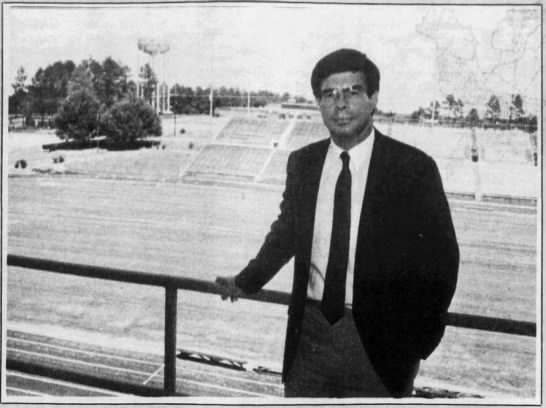
The bottom floor would be used for concessions. The second would be a suite of classrooms and booster club meeting areas. The third floor would be booster club boxes and the President’s box. Each box would feature 50 seats. I could find no record of what was on floors 4 or 5, but it’s clear that at least one was set aside for radio, print and TV.
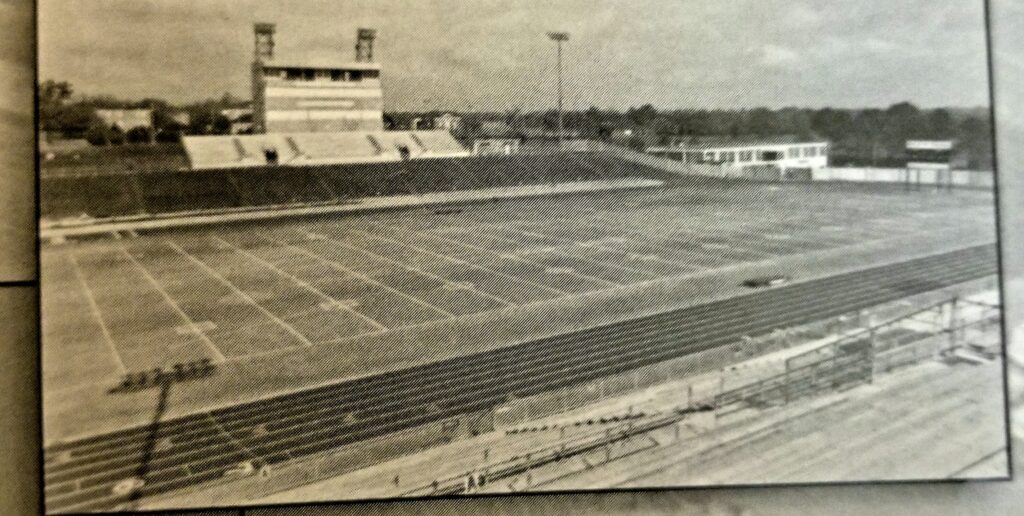
The last major upgrades happened sometime between this and Troy’s move to I-AA (now FCS). I was unable to find a specific time for this, but by 1991 Troy added more seats, increasing the capacity to 12,000. One could argue that these final changes closed the chapter on the old Memorial Stadium. Troy was ready for a new beginning in Division I football.
Coming up on Thursday, we’ll wrap up our history of the Vet with the third chapter, the construction of the stadium we all know and love!

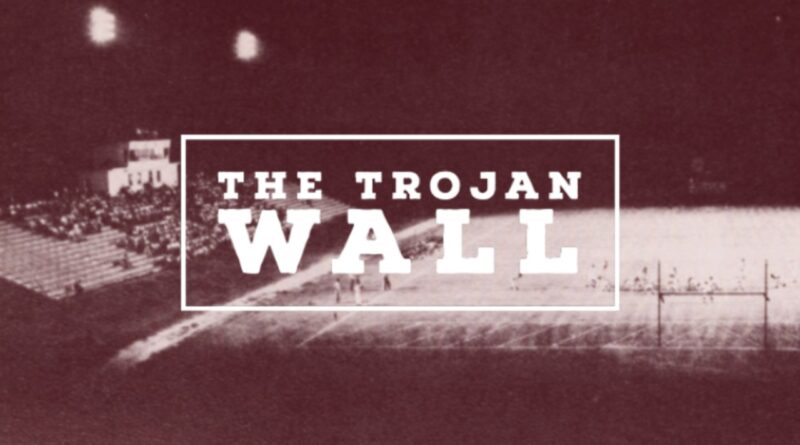
My father, Bruce Long, was on the Trojan team going into the 1950 season, but was drafted and sent to Korea. While an article from the Alabama Journal in August 1950 shows he was on the team, I find no documentation he actually was on the team roster when the 1950 season started. Do you? Thanks!
A cursory search of Palladiums didn’t find anything from the 1950 season other than a picture of him with some other past and present captains. He wasn’t dressed out for the game.
I found a Troy Messenger article from April that showed he was in the spring game with the fullbacks. Articles from August and September still showed him listed among the fullbacks.
The only thing I saw involving a Bruce Long and the military was a Bruce Long attending radar school in Texas in October of that year.